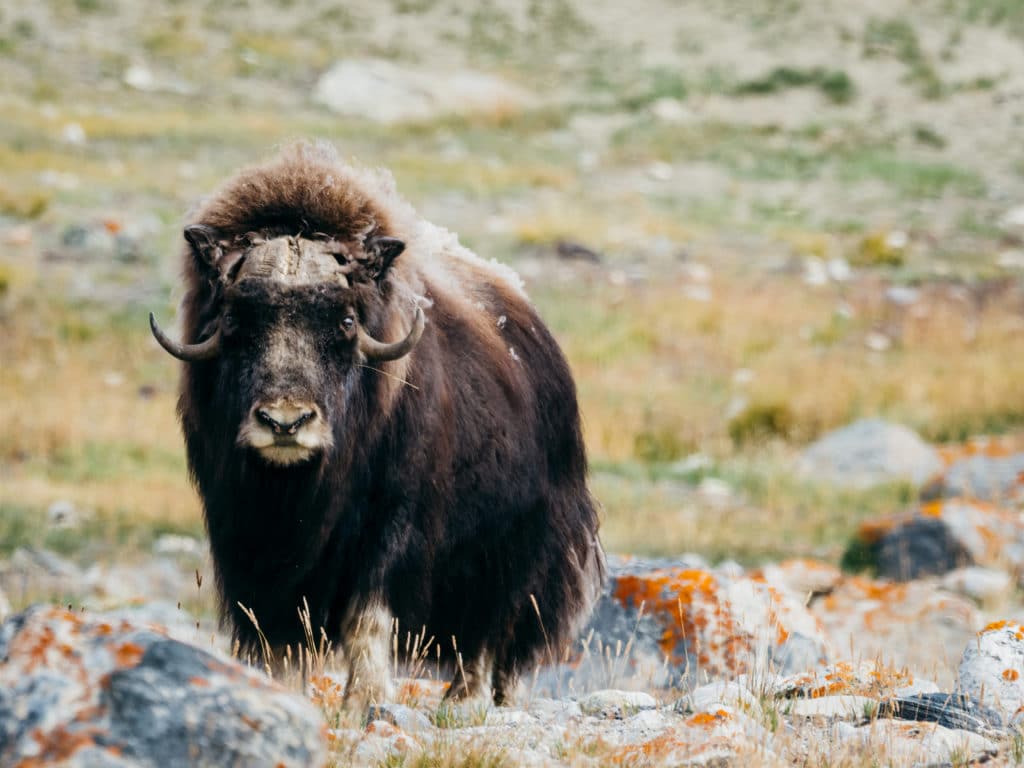When you reach the icy, cold tundra of Greenland’s shore during your Arctic excursions, you may spot on the horizon a few large brown rocks. There’ll probably be quite a few, close together, and you may think nothing of it, having seen more impressive sights during your Arctic expedition. However, there is a very real chance that they aren’t rocks, but rather, large, hairy beasts called musk oxen.
These creatures are the largest mammals you’ll find in Greenland, with long shaggy hair, thick hooves and horned faces. They’re not the most attractive beings to look at, but they are certainly a fascinating species to learn about.

Meet the musk ox
Musk oxen can weigh up to 400 kilos each. Their Greenlandic name, Umimmak, means long-bearded ox. What makes them so unique is their long, brown, shaggy coats. Contributing to the bulk, their fur is actually double-layered for insulation against the cold.
The long hairs – called guard hairs – make up the outer layer of their fur and is shed near the end of winter when the climate warms up. Underneath is a shorter, fuzzier layer of fur, wool which is commonly harvested into clothing or crafts by local Greenlandic people. This is one of the reasons that they are hunted; the other for their lean meat – considered a “gourmet delicacy” according to A Taste of Greenland (ATG).
Despite being coveted for their coat and meat, the musk ox are estimated to sit at around 19,000-27,000 individuals, says ATG. They are native to northern Greenland, but were purposefully released in western Greenland, a place with better living conditions, to improve their numbers.
A female musk ox will carry her calf for around eight months. A few hours after birth, you will find the calf able to run around with the rest of the herd on its own.

See the musk ox and more with Aurora Expeditions
The musk ox is only one of the many unique animals that are found in Greenland, let alone the Arctic itself. There’s enough around that you’ll definitely spot at least one musk ox during your excursion, so you won’t regret a cruise to the Arctic!
If you’d like to know more about the animals unique to Greenland or the expeditions that reach the Arctic, contact our friendly team today.
Wild Landscapes of West Greenland
Expedition
Welcome to Aurora’s Wild Landscapes of West Greenland expedition. Home to the northernmost capital in the world, Nuuk, the west coast of Greenland may be the most inhabited part of the...
15 Days
From AUD $27,676.00/pp

